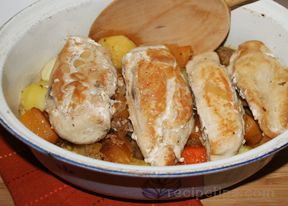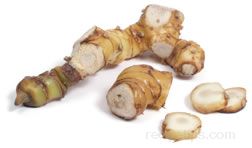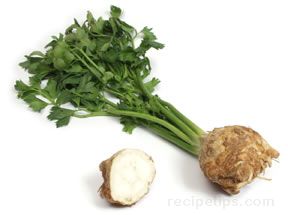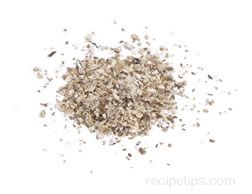Similar Content to: Taro Root

Depending on the variety grown, this root can be bitter or sweet in flavor and should always be washed, peeled and cooked to remove a poisonous and toxic milky latex-like substance this lies just beneath the bark. When the bark is cut, the juice containing a cyanogenetic glucoside (manihotoxine) break down to become prussic or hydrocyanic acid, acetone and glucose. If eaten, this acidic juice contained in the root and beneath the bark can attack enzymes within human digestive systems, causing discomfort, illness, and possibly death. If not processed properly (it should be dried, soaked in a water solution, thoroughly washed, and cooked) a poisonous cyanide toxin that causes harm to human digestive systems cannot be effectively removed from the crop. However, since the varieties vary and since this tuber may cause different levels of distress if consumed raw, it is always best to be safe and cook the vegetable before eating.
As a food high in carbohydrates, containing almost 140 calories in an average sized tuber, this vegetable is often prepared and served much like a potato as a side dish or added as an ingredient in soups and stews. The texture is very absorbant, so the flesh of the root takes on the flavor of any other ingredients combined with it when baked, boiled, fried, or sauteed. The root contains significantly more fiber content and only slightly more potassium than a potato. In addition to the root, the plant leaves are also consumed as they are cooked and served as a vegetable green. When harvested, the root has a rough brown outer skin that covers a white crisp textured flesh. As a fresh root, it will often be coated with editable wax in an attempt to store it for longer periods of time. After being harvested, it will not last long. Fresh roots can be stored in the refrigerator for 1 to 2 days, but store slightly longer (3 to 4 days) when kept out of the refrigerator in a cool dry area. The flesh freezes well and can be kept for several months frozen if peeled, cut into chunks and wrapped in an airtight wrapping.
Commonly used to make tapioca, tapioca flour, pancakes, and snack chips, this root may also be referred to as Cassava Root, Manioc Yuca, Manioc, Manihot, Mandioca, and Eddoes. At times, it is mistakenly referred to as Yucca, which is a non-edible plant from the Agave plant family.












